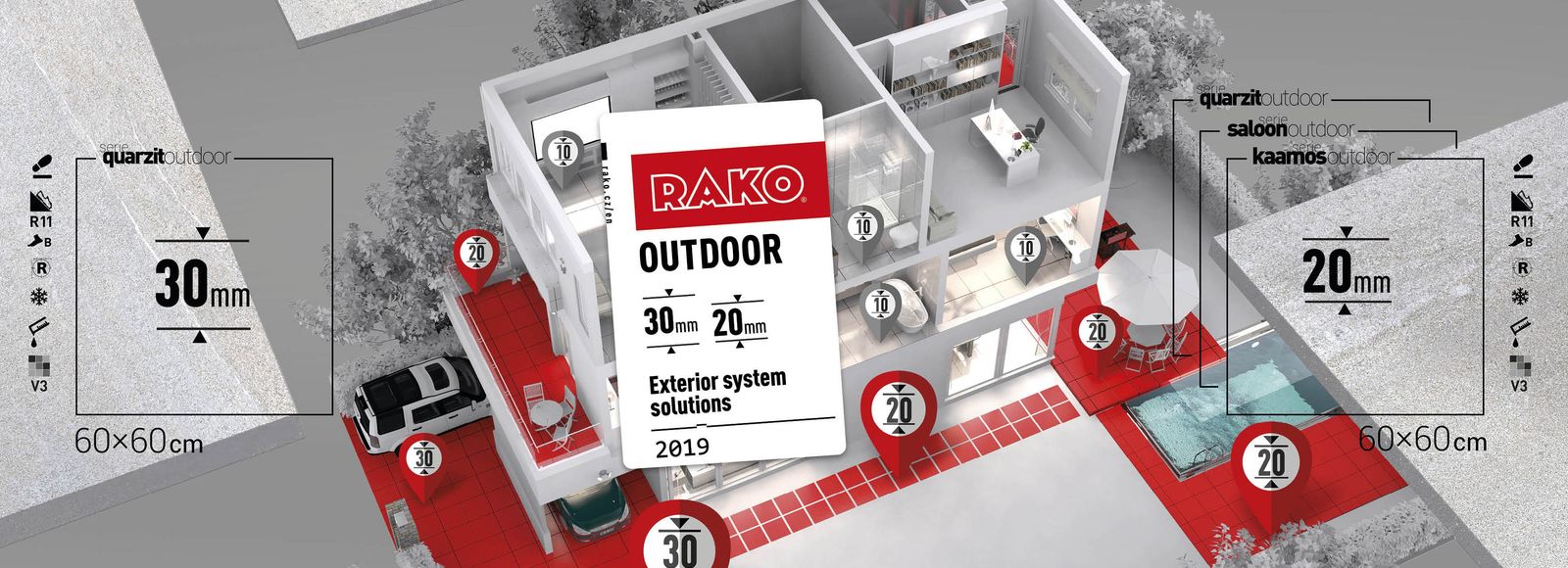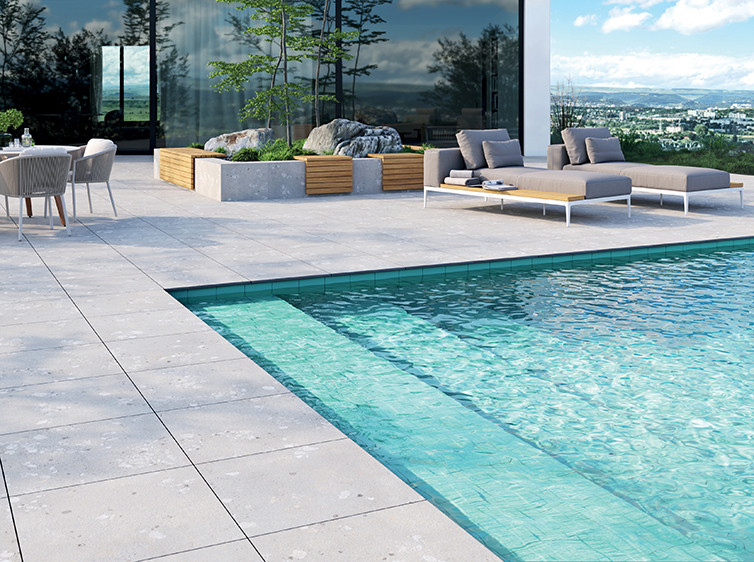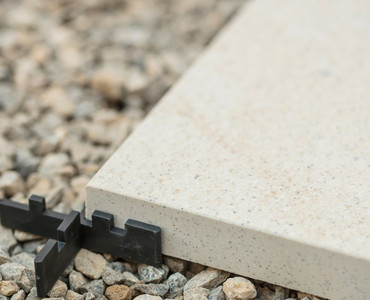
Exteriors
-

Rectified edge
-

Environmentally friendly product minimising environmental burden, EPD and LEED certifications
-

High chemical resistance
-

Highly sintered ceramic material 2 cm and 3 cm body thickness
-

Much easier to clean than concrete tiles, suitable for high-pressure cleaning
-

100% frost-proof material withstanding temperature changes
-

Easy installation with the possibility of removing the tiles for repair, servicing, etc.
-

R11/B anti-slip surface for a safe step
Advices and tips
Frequently asked questions
Why to prefer outdoor ceramic paving to other materials?
The current ceramics for exteriors are made of a sintered material with no pores. This means that if you drip oil when barbecuing or spreading salt on black ice in winter, you will have no problem removing this dirt. Ceramics are much easier to clean than concrete. This also means that water will not soak into the material which makes the material frost-proof. Ceramics also offer another benefit in its handling. Ceramic tiles are lighter than concrete tiles. A 60 × 60 × 2 cm RAKO OUTDOOR ceramic tile weighs 16 kg, while a 60 × 60 × 5 cm concrete tile weighs 42 kg and so a ceramic tile stresses the base structure less than concrete. Ceramics can be recycled and do not give rise to hazardous waste.
Thanks to digital printing technology, the quality and design of the tiles are indistinguishable from natural materials. The attractive Burlington stone pattern can be found in the Quarzit Outdoor series, the slate look in the Kaamos Outdoor series, imitation of concrete can be found in Rebel Outdoor, terazzo design you can find in Piazzetta Outdoor series and the completely believable wood pattern in the Saloon Outdoor series. RAKO Outdoor tiles are environmentally friendly products with a low environmental impact (EPD, LEED certifications).
How does the ceramic floor tile compare to natural stone?
The granite hardness ranges between 6-7 on the Mohs scale, but travertine and marble, for example, rate only 3 on the scale. Ceramic sintered floor tiling as a material reaches 7 on the hardness scale, and thanks to its high-quality glazes, it features the highest wear resistance rates PEI 4 and PEI 5. Moreover, some types of soft and porous stone are not frost-proof. And in financial terms, ceramic tiles are cheaper than to natural stones.
Can tiles be slippery – unlike concrete tiles?
If you choose the right anti-slip tile surface, then the outdoor paving will not slip even in wet conditions. Based on our experience, we recommend using the R11/B class anti-slip surface. It guarantees safe walking both with shoes on and barefoot. And it is in the RAKO OUTDOOR range that such antislip tiles can be found.
Can the outdoor surfaces be matched to the indoor space design? Yes!
A cosy terrace or balcony provides a natural transition from the indoors to the garden. On warm summer days, it often becomes a second home. In addition, the design of the 60 × 60 × 2 cm RAKO OUTDOOR tiles is fine for the QUARZIT, SALOON, KAAMOS, REBEL and PIAZZETTA floor series, so you can perfectly match the transition from indoors to outdoors visually.
-
RAKO Magazine - Hints and tips
Every reconstruction starts with the choice of ceramic materials. Interesting makeovers, advice, tips and instructions may come in handy.
RAKO Magazine



















